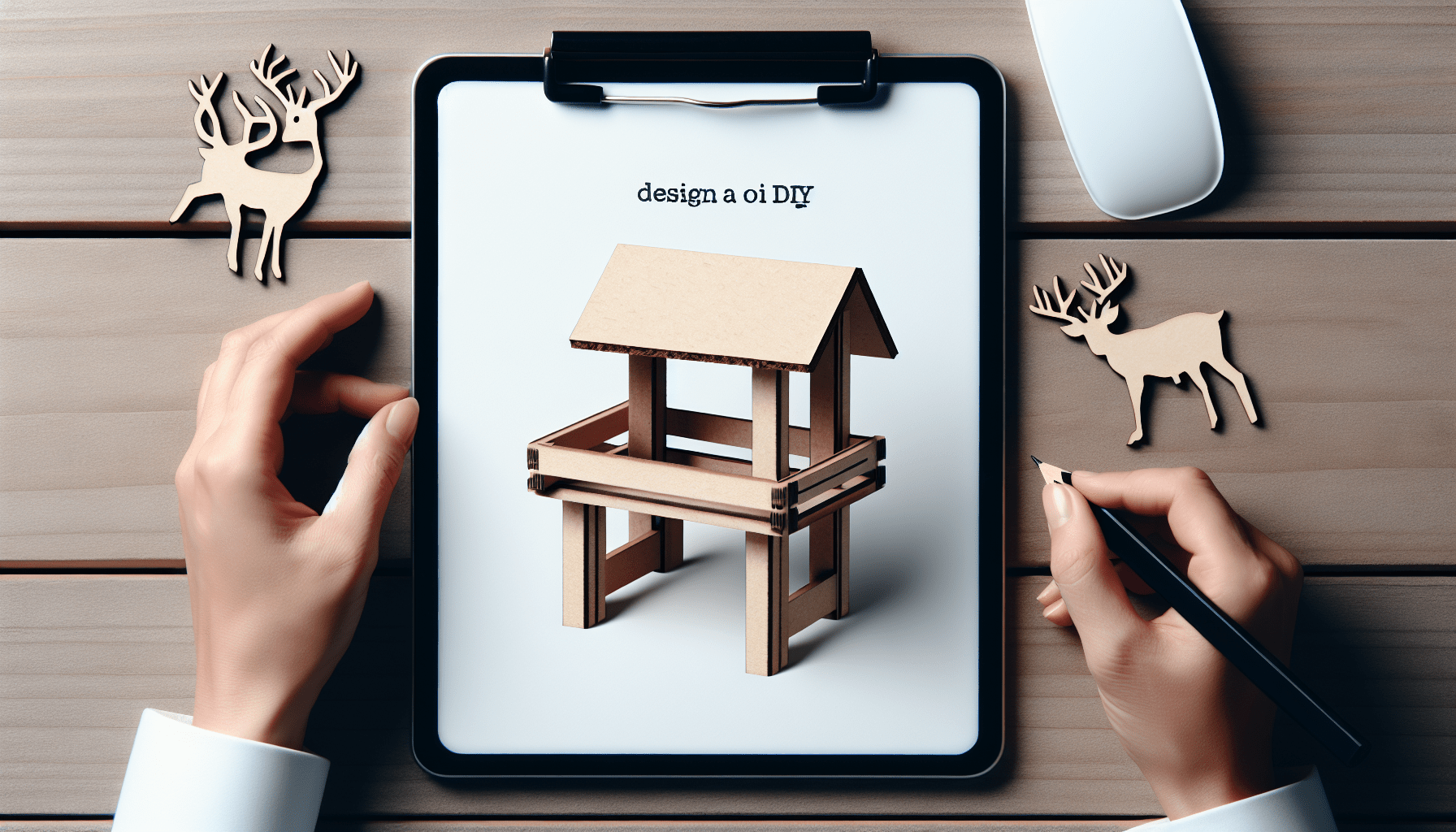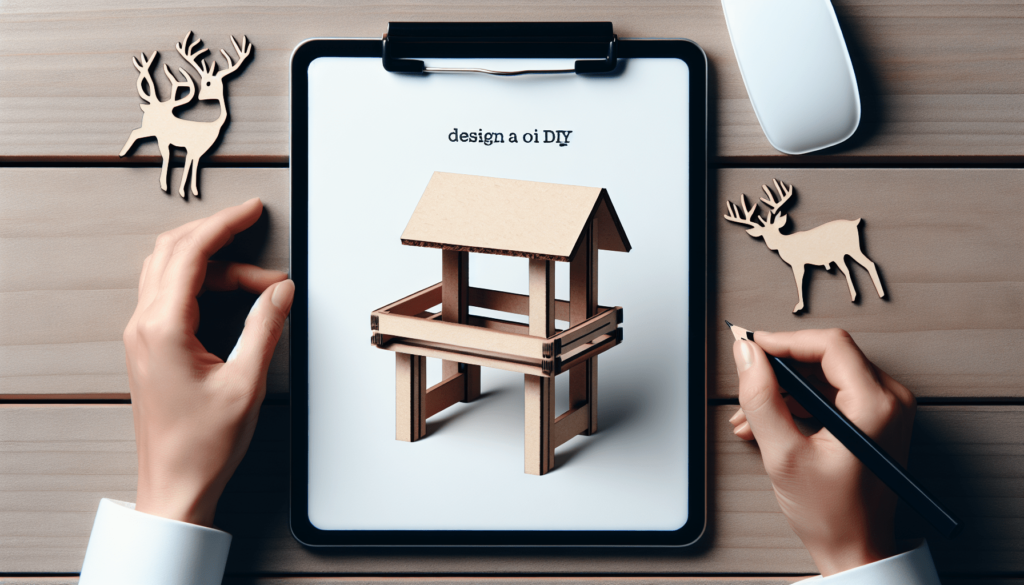
Are you a nature enthusiast looking to attract deer to your small backyard or garden? If so, we’ve got the perfect solution for you! In our article, “How To Design A DIY Deer Feeder For Small Spaces,” we will provide you with all the necessary steps and tips to create your very own deer feeder tailored specifically for limited areas. Whether you have a tiny balcony or a compact outdoor space, this DIY project will allow you to enjoy the beauty of deer visiting your home in a safe and convenient way. So, grab your tools and get ready to embark on an exciting journey of creating a personalized deer feeding station!
Understanding the purpose of a deer feeder
Deer feeders serve multiple purposes, whether it’s for observation or hunting. By attracting deer to a specific location, you can set up a prime spot for wildlife viewing. It also provides an opportunity for hunters to increase their chances of a successful hunt. Additionally, deer feeders can be used to provide supplemental feeding during periods of scarce natural food, ensuring the health and well-being of the deer population in your area.
Considering hosting area’s characteristics
Before designing a deer feeder, it is essential to assess the characteristics of the hosting area. Firstly, determine the available space for the feeder. Consider the size and layout of the area to ensure the feeder fits comfortably. Secondly, analyze local deer movement and feeding patterns. This knowledge will help you strategically place the feeder in an area frequented by deer. Lastly, it is essential to understand the local regulations and laws regarding wildlife feeding. Ensure that your feeding activities comply with the guidelines set by the relevant authorities.
Choosing the right materials
When selecting materials for your DIY deer feeder, several factors should be taken into consideration. Opt for durable, weather-resistant materials such as metal or quality PVC that can withstand the elements and last for an extended period. It is also important to choose materials that are easy to work with and modify for any adjustments or repairs that may be needed. Lastly, avoid materials that may harm the deer or the environment. Choose materials that are non-toxic and safe for wildlife.

Deciding on the feeder design
There are various feeder designs available, and choosing the one that suits your needs is crucial. Three common designs are gravity, trough, and spinner feeders. Gravity feeders use a hopper and chute system to distribute feed to deer. Trough feeders consist of a long, narrow container that allows multiple deer to feed simultaneously. Spinner feeders disperse feed in a radius around the feeder, which can attract deer from different angles. Consider the space available and the local deer size and habits when selecting a feeder design.
Creating the feeder base
A sturdy and well-built base is vital to support the weight of the feeder and ensure stability. Make sure the base is robust enough to handle the feeder and withstand any environmental conditions. It is important to create a base that doesn’t hinder deer access to the feeder. Design the base with appropriate dimensions and height to allow deer to comfortably reach the feeding area. Additionally, consider the soil or surface conditions of the hosting area and adjust the base’s stability accordingly.
Building the feed storage area
The feed storage area of your deer feeder should be designed to optimize space and store the maximum amount of feed. Consider the amount of feed your feeder needs to hold to determine the size of the storage area. Design an easy-access opening for refilling, allowing you to replenish the feed without any hassle. Moreover, incorporate mechanisms such as no-spill openings or barriers to minimize feed waste, ensuring efficient utilization and reducing the chances of attracting unwanted pests.
Constructing the feeding station
When constructing the feeding station, prioritize the deer’s eating experience. Design a station that allows deer to comfortably access the feed and consume it without any obstacles. Consider the height of the feeding area, ensuring it aligns with the average size of the local deer population. Additionally, account for the deer’s comfort and safety by avoiding sharp edges or protruding parts that could potentially cause injury. Minimize feed spillage or over-consumption risks by incorporating features such as baffles or adjustable feed flow mechanisms.
Ensuring deer safety
Deer safety should be a top priority when designing a deer feeder. Prevent any potential injury risks by opting for a well-rounded, non-sharp design. Avoid using materials that could break or create loose parts that deer might ingest accidentally. Furthermore, it is crucial to keep the feeder at a safe distance from roads or populated areas. This prevents the risk of deer crossing busy roads or creating conflicts in residential neighborhoods, keeping both humans and deer safe.
Setting up and maintaining the feeder
You will want to consider the ease of setting up and maintaining your DIY deer feeder. Incorporate an easy setup and disassembly process, allowing for convenient transport or relocation if necessary. Additionally, establish a regular cleaning and refilling schedule to ensure the feeder remains hygienic and the deer have a fresh supply of feed. Regularly check for any worn-out parts and promptly service or replace them to avoid any potential issues or malfunctions that may affect the deer’s feeding experience.
Reviewing effectiveness and making adjustments
After setting up your deer feeder, monitoring its effectiveness is crucial. Keep an eye on how well it attracts deer and if they consistently visit the feeding station. Observe the behavior of the deer and make any necessary adjustments to the design. For example, if deer seem hesitant to approach, consider adjusting the height or location of the feeder. Keep in mind that deer feeding needs can change with seasons, weather conditions, and the availability of natural food sources. Adapt your feeder design or feeding schedule accordingly to ensure the best results in attracting and supporting the local deer population.
By following these guidelines and understanding the key factors involved in designing a DIY deer feeder, you can create an effective and safe feeding station for observing or hunting deer in a small space. Remember to comply with local regulations, prioritize deer safety, and regularly maintain and adjust the feeder to ensure its long-term effectiveness. With a well-designed deer feeder, you can foster a healthy deer population and enhance your wildlife viewing or hunting experience.



